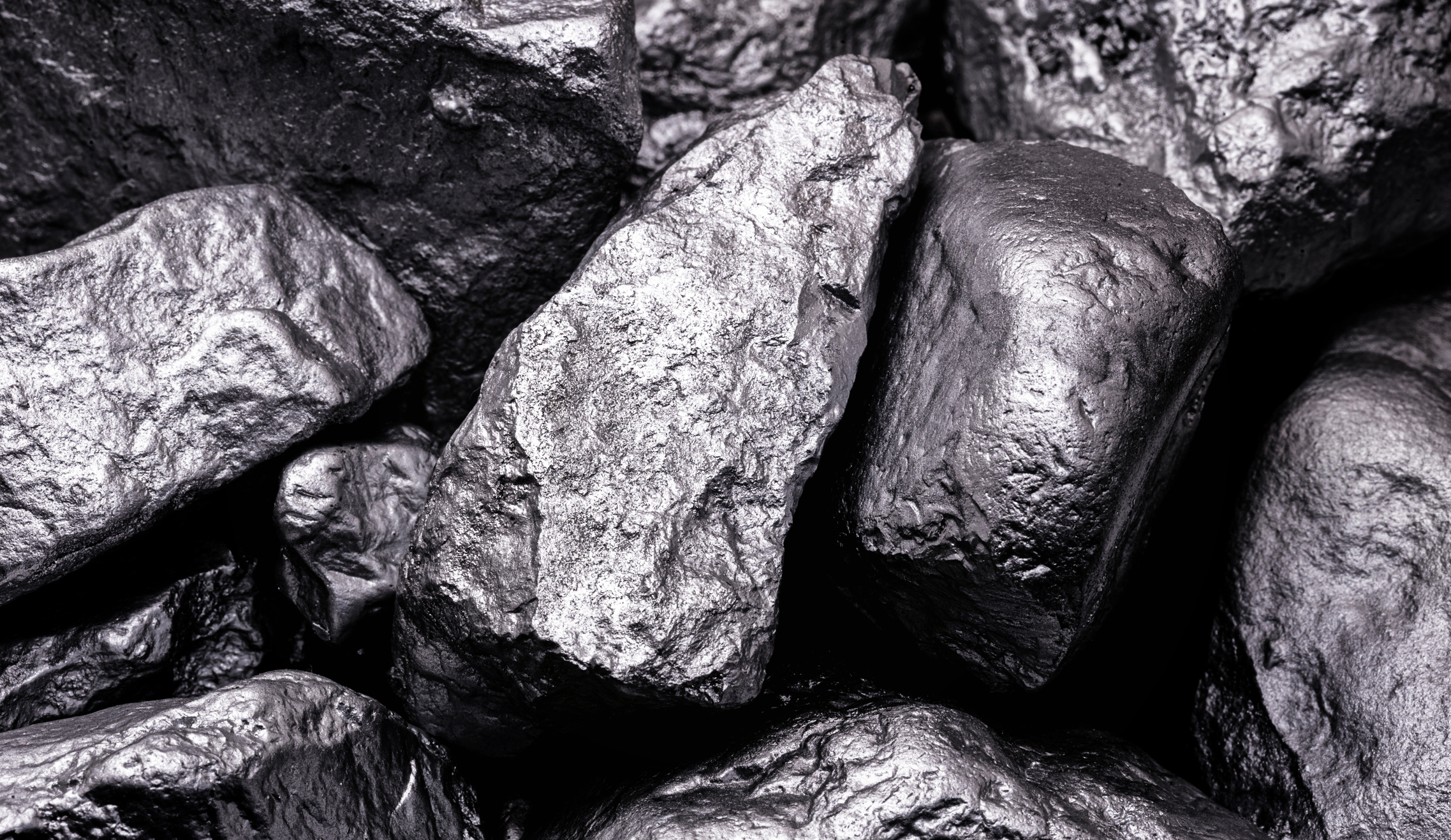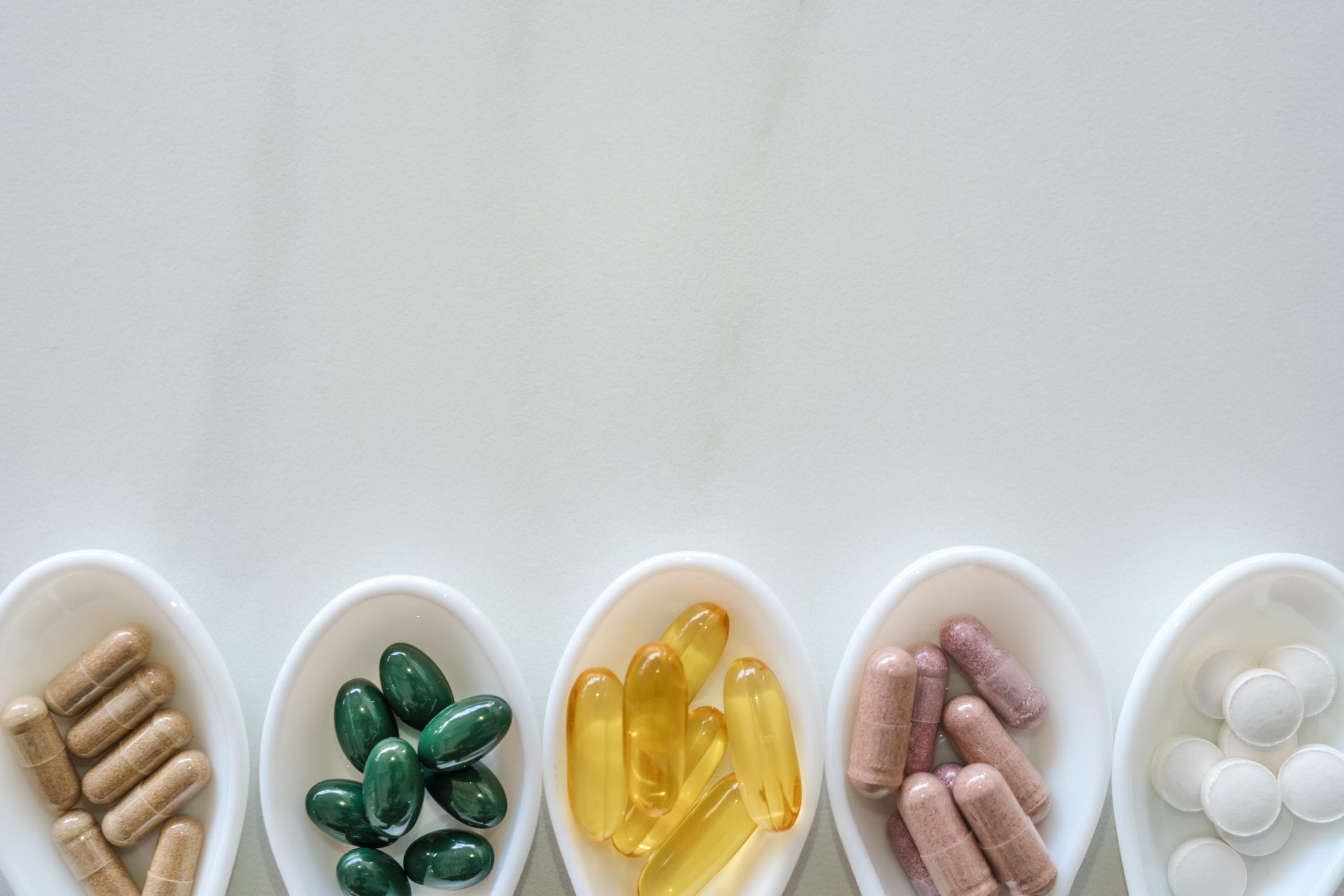- pubchem.ncbi.nlm.nih.gov - Manganese
- ncbi.nlm.nih.gov - The Essential Element Manganese, Oxidative Stress, and Metabolic Diseases: Links and Interactions, Longman Li, Xiaobo Yang
- pubmed.ncbi.nlm.nih.gov - Manganese in health and disease, Daiana Silva Avila, Robson Luiz Puntel, Michael Aschner
- pubmed.ncbi.nlm.nih.gov - Manganese metabolism in humans, Pan Chen, Julia Bornhorst, Michael Aschner
- pubmed.ncbi.nlm.nih.gov - Manganese and the brain, Karin Tuschl, Philippa B Mills, Peter T Clayton
- pubmed.ncbi.nlm.nih.gov - Manganese: Its Role in Disease and Health, Keith M Erikson, Michael Aschner
- britannica.com - Manganese
- lpi.oregonstate.edu - Manganese
- multimedia.efsa.europa.eu - Dietary Reference Values for the EU
Manganese: What is it good for in the human body? Sources in food and water

Did you know that manganese is also an important trace element for the human body? In what foods can we find it and why its intake must be balanced? Learn about the properties and main functions of manganese.
Article content
Manganese and its properties
Manganese is a mineral element known by the chemical name Mn. It is derived from the Latin word manganum.
It is the twelfth most abundant element on the planet. In trace amounts, it is also an important component of living organisms.
Manganese in the human body: is it beneficial? How to recognize its deficiency or excess?
As a chemical element, manganese was first recognized in 1774 by the Swedish chemist Carl Wilhelm Scheele, specifically as part of the mineral pyrolusite.
In the same year it was isolated by another Swedish chemist, Johan Gottlieb Gahn, by heating pyrolusite.
The name manganese comes from the Latin word "magnes", which translates to magnet. This again refers to its mineral pyrolusite, which has been found to have magnetic properties.
Manganese is an element of group 7 of the periodic table of chemical elements and is found in period 4.
It is classified in a group of elements called transition elements or also transition metals.
This name comes from the time when chemists attributed to elements in the middle of the periodic table the transitional properties between alkali metals and non-metals.
In terms of properties, manganese is a silver-grey metallic element that can resemble iron. However, it is harder and very brittle compared to iron.
It is reactive and oxidises very easily. It oxidises superficially in air and decomposes in water. Manganese and some of its compounds have paramagnetic properties.
A tabular summary of basic chemical and physical information about manganese
| Name | Manganese |
| Latin name | Manganum |
| Chemical name | Mn |
| Classification of elements | Transition metal |
| Grouping | Permanent |
| Proton number | 25 |
| Atomic mass | 54,938 |
| Oxidation number | +2, +3, +4, +7 |
| Density | 7,3 g/cm3 |
| Melting point | 1246 °C |
| Boiling point | 2061 °C |
Manganese is released into the air, soil and water by natural erosion of the earth. It is almost non-existent in free form, precisely because of its reactivity and the fact that it is easily oxidised.
It therefore occurs in the form of inorganic or organic compounds. The organic ones predominate.
In nature it is mainly distributed in the form of minerals. The most common minerals are oxides, silicates or carbonates. For example, the already mentioned pyrolusite (MnO2) or braunite, psilomelane, rhodochroside.
Nowadays, manganese and its compounds have important industrial applications in various sectors.
The largest proportion of manganese (up to 90 % of total annual production) is used in the production of steel to improve its properties - increasing its formability, strength and durability.
Other uses of manganese are:
- It is added to aluminium alloys as a protective agent against corrosion.
- It serves as a pigment, for example in the colouring of glass, ceramics or precious stones.
- It is used to remove the green discolouration of glass caused by the presence of iron.
- It is included in batteries.
- In agriculture it is used as an additive in fertilisers (especially for citrus crops), pesticides or mould killers.
- The disinfectant and antiseptic effects of some manganese compounds are also exploited.
- It is used in medicine as a contrast agent in imaging examinations and is an important component of infant milk or parenteral nutrition.

What is the function of manganese in the human body?
Manganese is an essential trace element. Humans only need it in small amounts. Yet its presence in the human body is crucial for maintaining health and normal functions.
The body cannot produce manganese on its own and depends on its intake from the external environment.
The primary form in which manganese is found in living organisms is as the ion Mn2+ or Mn3+.
Manganese has several important physiological functions.
Its main role is related to enzymes and the functioning of enzyme systems in the body. Manganese either acts as a component of these enzymes (necessary for their formation) or is involved in the activation of existing enzymes (necessary for their function).
Which enzymes are involved? In fact, we are talking about a wide range of enzymes from the group of oxidoreducts, transferases, hydrolases, lyas, isomerases or ligases.
Within this range of enzymes, we even find enzymes that are strictly dependent on the presence of manganese in the body. Without sufficient manganese, these enzymes are neither formed nor activated.
Examples include:
- Glutamine synthetase - It works in the brain where it breaks down certain toxic substances (metabolic function).
- Superoxide dismutase - The main antioxidant enzyme in cells. It converts reactive oxygen species into water, thereby protecting them from damage (antioxidant function).
- Arginase - An enzyme in the liver needed to break down toxic ammonia produced during metabolic processes (metabolic function).
- Pyruvate carboxylase - A key enzyme for the formation of glucose (metabolic function).
The main physiological functions and processes in which manganese is involved by influencing enzymes can therefore be summarized as follows:
- Normal development of the organism
- Influence on immunological, neural and sex hormone functions
- Antioxidant action
- Regulation of sugar, fat and protein metabolism
- Formation of energy in cells
- Bone and cartilage growth
- Blood clotting
- Regulation of blood sugar levels by affecting insulin production
- Development of the brain and its functions
- Wound healing by affecting collagen production
Manganese - from intake to excretion
Absorption
Manganese can enter the body through several routes. The most common routes are via the digestive tract, inhalation, parenterally or through skin contact.
Of these routes, the oral route of absorption, i.e. the intake of manganese by mouth, is the predominant route. Absorption occurs in the environment of the digestive tract.
The main sources of manganese are water, food, dietary supplements or infant formula.
Manganese is absorbed specifically in the small intestine by two mechanisms - passive diffusion or active transport requiring energy. The rate of absorption is relatively high.
The carriers through which manganese passes through the intestinal cells are not specifically for manganese. They also carry other metallic elements such as iron, copper, zinc or calcium.
These compete with each other for a particular carrier. This can affect the rate of absorption of each element.
Of the total amount of manganese ingested, only about 3-5 % is absorbed in the digestive tract.
The rate of absorption of manganese in women is generally higher than in men. This is probably due to the difference in iron levels between the sexes.
This reflects the fact that iron and manganese use the same transporter for absorption. Thus, if iron levels are lower, manganese has more opportunities to bind to the transporter.
Also for this reason, the daily dietary requirements for manganese intake may be lower in women.
Another factor affecting absorption is age. Infants and children have a higher intake of manganese. This is based on the naturally higher need for manganese during the growth and development of the child.
Other routes of absorption of manganese (i.e. the inhalation or skin passage already mentioned) most often involve people who come into contact with manganese in their work, such as industrial workers, miners, welders, etc.
Manganese is administered parenterally (intravenously) to premature babies or people receiving total parenteral nutrition as part of maintaining adequate daily intake of nutrients, including manganese.
Distribution and regulation
Absorbed manganese enters the blood from the digestive tract and is distributed to various parts of the body.
The physiological concentration in the blood ranges from 4 to 15 mg/l. Women usually have a concentration about 30 % higher than men (due to a higher absorption rate).
Manganese is bound in the blood to red blood cells, which transport it. It is transported as Mn2+ or Mn3+ ions. Mn2+ predominates.
The organs in which the greatest amounts of manganese are concentrated are the liver, pancreas, bones, colon, kidneys and brain (from 0.15 to 1.3 mg/kg). To a lesser extent, the urinary tract or red blood cells.
Manganese has the ability to cross the blood-brain barrier, the blood-brain barrier, the placenta and is also excreted in breast milk.
Maintaining manganese levels at physiological levels is important for the health and proper functioning of the body. Regulatory mechanisms that maintain so-called homeostasis are involved in this process.
The liver is the main organ that regulates manganese in the body. It controls its intake and excretion through the intestines.
On the one hand, they influence the transporters located in the intestines, thereby regulating absorption. On the other hand, they capture excess manganese from the blood and excrete it back into the intestines via bile (which is formed in the liver).
Also, due to the strict regulation of the amount of manganese already absorbed in the intestines, toxicity due to excessive food intake is very rare.
The most sensitive organ to excess manganese in the body is the brain. In toxicity, it is the disorders of the brain and central nervous system that are the most obvious and also the most serious symptoms.
Excretion
The primary route of excretion of manganese is bile after it has been taken up by the liver.
Together with bile, it re-enters the intestines and is subsequently eliminated from the body in the faeces.
Patients with liver disease may therefore be susceptible to excess manganese and hence manganese toxicity.
In addition, manganese is also excreted in very small amounts in urine, milk or sweat.
What is the recommended daily intake of manganese?
Recommendations for the average daily intake of manganese have not been established due to the lack of data.
However, the European Food Safety Authority publishes values for adequate intake of manganese. Adequate intake is an average value based on observation. It is assumed to correspond to the needs of the population.
Table of adequate daily intakes of manganese by age
| Age group | Adequate intake of manganese |
| Infants (aged 7-11 months) | 0,02-0,5 mg/day |
| Children aged 1-3 years | 0.5 mg/day |
| Children aged 4-6 years | 1 mg/day |
| Children aged 7-10 years | 1.5 mg/day |
| Adolescents aged 11-14 years | 2 mg/day |
| Adolescents aged 15-17 years | 3 mg/day |
| Adults (aged ≥ 18 years) | 3 mg/day |
| Pregnant women (aged ≥ 18 years) | 3 mg/day |
| Breastfeeding women (aged ≥ 18 years) | 3 mg/day |
Dietary sources of manganese
For most of the population, food and drinking water are the main sources of manganese that can sufficiently cover the required daily intake.
Foods higher in manganese include nuts (hazelnuts, almonds, pecans), rice, wheat germ, bran, oats, legumes, green leafy vegetables, fruit (pineapple), tea, chocolate and seafood (especially mussels).
The amount of manganese in drinking water depends on the location and the degree of pollution. It ranges from 1 µg/l to 2 mg/l.
Currently, dietary supplements containing manganese are available on the market, but only in the form of multi-ingredient preparations - multivitamin or mineral supplements.
However, in addition to manganese sulphate, manganese sulphate, manganese ascorbate or amino acid complexes with manganese are also commonly used.

Potential manganese-food interactions may occur with simultaneous intake of phytic acid, which is present in nuts, seeds, beans, soybeans or cereals. They may also occur with simultaneous intake of oxalic acid, which is present in cabbage, spinach or sweet potatoes.
In both cases, there is a slight inhibition of manganese absorption.
There is also a slight reduction in manganese absorption with the simultaneous intake of tannins, which are abundant in teas.
Furthermore, iron, already mentioned, reduces the absorption of manganese in the digestive tract at high levels. Calcium and phosphorus also reduce the rate of manganese absorption.
And magnesium, which, in addition to reducing absorption, even increases manganese excretion.
How to recognize manganese deficiency and excess?
Manganese is involved in a number of biological processes in the human body and is practically indispensable. Yet its excessive accumulation can pose a potential risk.
The line between good and harmful levels of manganese is quite thin. Therefore, it is important that the regulatory mechanisms in the body function sufficiently to maintain manganese homeostasis.
Disruption of this homeostasis and the development of a deficiency or excess of manganese usually results in health complications or side effects.
Manganese deficiency
The existence of insufficient amounts of manganese in the body is a rare condition that is hardly observed in humans.
This is because there is enough manganese in food and drinking water to cover daily requirements.
The manifestations and complications caused by manganese deficiency have only been studied experimentally and by artificially inducing deficiency (mostly in animals).
Manganese deficiency has caused the following complications:
- Retardation of bone growth and development
- Abnormalities in skeletal shape
- Impaired reproductive function
- Impaired mobility
- Impaired fat, protein and carbohydrate metabolism, excessive glucose tolerance
- Mood changes
- Congenital defects
In a few cases, manganese deficiency has been observed in humans. In these cases, symptoms such as inflammatory skin disorders, retarded hair and nail growth, reduced cholesterol levels, reduced blood clotting or increased blood calcium and phosphorus levels have been observed.
Excess manganese
In the case of manganese, the opposite situation is much more common, i.e. the occurrence of its accumulation in the body.
Excess is most often caused by excessive ingestion or inhalation of manganese. It can also be caused by a failure of the regulatory processes that maintain homeostasis.
The risk groups for developing excess manganese in the body are:
- Infants and children - due to the naturally higher rate of absorption of manganese in the digestive tract
- Infants fed artificial milk and patients receiving parenteral nutrition
- Patients with a congenital disorder of the transporter in the liver involved in manganese excretion
- Patients with chronic liver disease causing poor liver function in terms of excretion of excess manganese into the bile
- Patients with iron deficiency - iron deficiency increases the rate of absorption of manganese in the gastrointestinal tract
- People in hazardous jobs where manganese concentrations are elevated - welders, miners, steel workers. Usually involves inhalation of manganese compounds

The primary target organ of manganese toxicity is the brain. Brain involvement is manifested by characteristic neurological symptoms - uniformly referred to as manganism.
In manganism, the individual's mental and motor skills are particularly affected.
Manganism develops over a long period of time. In the early stages, the sufferer may experience slowed reactions, irritability, depression, mood swings, compulsive or aggressive behaviour, hallucinations or intellectual disorders.
Later, there is general weakness, loss of facial expressions, speech problems, excessive salivation and sweating, involuntary limb movements, tremors, muscle rigidity, gait changes (walking in a forward bend), problems with dexterity and balance, and more frequent falls.
However, they do not respond to levodopa, a drug used to treat Parkinson's disease.
In addition to symptoms related to brain damage, manganism can also cause liver disorders (cirrhosis, disturbances in liver enzymes) or cardiovascular disorders (increased heart rate, decreased blood pressure).
The main symptoms of excessive inhalation exposure to manganese are cough, bronchitis, pneumonia and impaired lung function.
Interesting resources
Related










